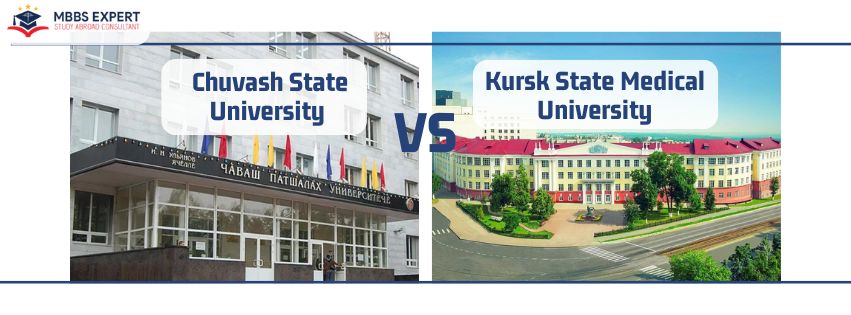Study MBBS at Ingush State University, Russia – Your Gateway to an Affordable Medical Education…
Future of Medical Education in Russia Trends and Innovations
![]()
Future of Medical Education in Russia Trends and Innovations
Medical education in Russia has a rich history, with many of its institutions ranking among the best in the world. As the country continues to evolve, so too does its approach to medical education. This evolution is driven by global trends, technological advancements, and a commitment to improving healthcare outcomes. This article explores the future of medical education in Russia, highlighting key trends and innovations shaping this field.
Integration of Advanced Technologies
Simulation-Based Learning
One of the most significant trends in medical education globally is the integration of simulation-based learning, and Russia is no exception. Medical universities in Russia are increasingly adopting high-fidelity simulators and virtual reality (VR) technologies to enhance the training of future doctors. These tools provide students with realistic, hands-on experience without the risks associated with real-life clinical practice. The use of simulation in medical training helps bridge the gap between theoretical knowledge and practical skills, ensuring that students are better prepared for real-world scenarios.
Artificial Intelligence (AI) in Medical Training
Artificial intelligence is revolutionizing various sectors, and medical education is no different. In Russia, AI is being leveraged to personalize learning experiences, assess student performance, and even predict future educational needs. AI-driven platforms can analyze vast amounts of data to identify patterns and trends, helping educators tailor their teaching methods to individual students. This personalized approach not only enhances learning outcomes but also ensures that future doctors are well-equipped to handle the complexities of modern healthcare.
Emphasis on Research and Innovation
Interdisciplinary Research Programs
Russian medical universities are placing a greater emphasis on research and innovation. There is a growing trend towards interdisciplinary research programs that combine medicine with fields such as engineering, biology, and information technology. These programs aim to foster innovation and develop new solutions to some of the most pressing healthcare challenges. By encouraging collaboration across different disciplines, Russian medical institutions are creating an environment where groundbreaking discoveries can thrive.
Encouraging Student Research
In addition to faculty-led research, there is a strong push to involve students in research activities. Many universities now offer research opportunities as part of their medical curriculum, allowing students to gain hands-on experience in conducting experiments, analyzing data, and publishing their findings. This early exposure to research not only enhances students’ understanding of medical science but also cultivates a culture of curiosity and innovation.
Globalization of Medical Education
International Collaborations
The globalization of medical education is another key trend shaping the future of medical education in Russia. Many Russian medical universities are establishing partnerships with international institutions to promote student and faculty exchange programs, collaborative research projects, and joint degree programs. These international collaborations provide students with a global perspective on healthcare, exposing them to different medical practices and cultural approaches to medicine.
Attracting International Students
Russia is also becoming an increasingly popular destination for international medical students. The country’s medical universities offer high-quality education at relatively affordable tuition fees, making it an attractive option for students from around the world. To accommodate the growing number of international students, many Russian medical schools are offering programs in English and providing additional support services to help students adapt to life in Russia. This influx of international students is fostering a diverse and multicultural learning environment, enriching the educational experience for all students.
Focus on Primary Care and Public Health
Training Primary Care Physicians
As healthcare systems around the world shift their focus towards preventive care and primary health services, medical education in Russia is also evolving to meet these needs. There is a renewed emphasis on training primary care physicians who can provide comprehensive and continuous care to patients. Medical curricula are being updated to include more training in primary care, community health, and preventive medicine. This shift aims to address the growing demand for primary care services and improve health outcomes across the population.
Public Health Initiatives
In addition to primary care, there is a strong focus on public health education. Russian medical schools are incorporating public health courses into their curricula to equip future doctors with the knowledge and skills needed to address population health issues. These courses cover topics such as epidemiology, health policy, and health promotion, preparing students to tackle public health challenges and contribute to the well-being of their communities.
Adoption of Modern Teaching Methods
Problem-Based Learning (PBL)
Traditional lecture-based teaching methods are gradually being replaced by more interactive and student-centered approaches. Problem-based learning (PBL) is one such method gaining popularity in Russian medical education. PBL encourages students to work in small groups to solve complex medical cases, promoting critical thinking, teamwork, and independent learning. This approach not only enhances students’ problem-solving skills but also makes learning more engaging and relevant to real-world medical practice.
Flipped Classroom Model
The flipped classroom model is another innovative teaching method being adopted by medical schools in Russia. In this model, students are provided with online resources, such as video lectures and reading materials, to study at their own pace before attending in-person classes. Classroom time is then used for interactive activities, discussions, and practical exercises. This approach allows for more active learning and ensures that students are well-prepared for hands-on clinical training.
Enhancing Clinical Training
Early Exposure to Clinical Practice
Recognizing the importance of early clinical exposure, many Russian medical schools are integrating clinical training into their curricula from the very beginning of medical education. Students are given opportunities to interact with patients, observe medical procedures, and participate in clinical rounds from their first year of study. This early exposure helps students develop clinical skills and gain confidence in their abilities, preparing them for the demands of medical practice.
Strengthening Partnerships with Healthcare Institutions
To enhance clinical training, medical universities in Russia are strengthening their partnerships with hospitals and healthcare institutions. These partnerships provide students with access to diverse clinical settings and a wide range of medical specialties. By working closely with experienced healthcare professionals, students gain valuable insights into clinical practice and develop the skills needed to provide high-quality patient care.
Conclusion
The future of medical education in Russia is marked by a commitment to innovation, research, and global collaboration. By embracing advanced technologies, modern teaching methods, and a focus on primary care and public health, Russian medical schools are preparing future doctors to meet the evolving needs of the healthcare industry. As these trends continue to shape medical education, Russia is poised to remain at the forefront of medical training, producing highly skilled and compassionate healthcare professionals who are ready to tackle the challenges of tomorrow.





